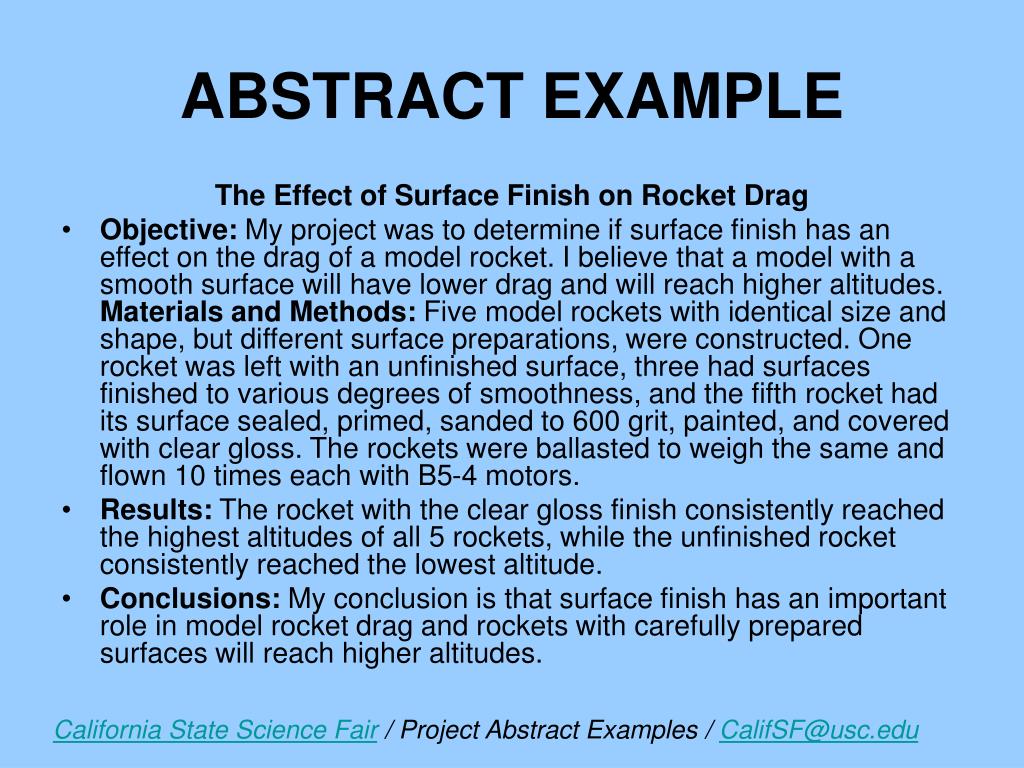If you’re gearing up for a science fair, one of the fundamental elements of your project is the abstract. This brief yet powerful summary not only sets the tone for your entire presentation but also captures the essence of your research. By effectively distilling the complexities of your work into a succinct format, you enhance your chances of making an impact. Let’s explore the nuances of writing an exceptional abstract and how to make your science project shine.
At its core, an abstract serves multiple purposes. It is a snapshot of your project that offers an overview to judges and reviewers who may be pressed for time. However, it’s also an opportunity for you to showcase your unique approach and findings. Keep in mind that while the abstract is concise—typically 150 to 250 words—it must still encapsulate key components: the purpose, methodology, results, and conclusions of your scientific endeavor.
Understanding the Purpose
Before you even start writing, it is crucial to grasp the importance of the abstract. Why does it matter? Consider it the gateway to your project. An engaging abstract intrigues the reader, compelling them to explore your project further. Conversely, a lackluster summary can cause your hard work to fade into the background. Aim to make a strong impression, as this is often the first point of contact for judges who assess numerous projects in a limited timeframe.
Breaking Down the Components
Writing an effective abstract involves weaving together several critical components:
- The Purpose: Clearly state the objective of your project. What question are you trying to answer? Why is it significant? This section should anchor the reader in the context of your research.
- The Methodology: Briefly describe how you conducted your experiment or research. Highlight the techniques, materials, or approaches used in your study. This gives your audience insight into the rigor of your work.
- The Results: Summarize your key findings. What did the data reveal? Include quantitative results if applicable, as these give weight to your conclusions.
- The Conclusion: State the implications of your findings. How do your results contribute to the existing body of knowledge? What future research could stem from your work?
Each of these components should be expressed concisely but with sufficient detail to inform the reader of your research’s gravity and relevance.
Crafting Your Abstract: A Step-By-Step Guide
Now that you understand the essential elements, it’s time to delve into the writing process. Here’s a step-by-step guide to help streamline your abstract composition:
- Draft After Completing Your Project: Writing your abstract should occur after your project is complete. This way, you have a comprehensive understanding of your findings and can accurately reflect them in the summary.
- Create an Outline: Prior to writing, draft an outline based on the essential components discussed. Map out the purpose, methodology, results, and conclusion to ensure that your abstract maintains a logical flow.
- Craft the First Draft: Begin with a straightforward statement of your research question. Follow it with a brief methodology overview, then move on to your results and conclusions. Don’t worry about word count initially; focus on getting your ideas down.
- Revise and Trim: Once the initial draft is composed, revisit each section to tighten your language. Aim for clarity and conciseness. Remove jargon unless it’s essential, as certainly not all readers will be familiar with specific terminology.
- Solicit Feedback: Share your abstract with peers or mentors for constructive critiques. Fresh eyes can catch errors or unclear phrases that you might overlook.
- Pole Vault Over the Final Touches: Ensure that your abstract flows smoothly, the transitions are coherent, and the language is engaging. Make sure it encapsulates both the scientific rigor and the creative aspects of your project.
Common Pitfalls to Avoid
As you finalize your abstract, be mindful of potential pitfalls that can diminish its impact:
- Vagueness: Avoid ambiguous language. Be direct and precise in your description of your research. Ambiguity can leave readers confused about your findings.
- Overcomplication: While scientific terms can add credibility, overloading your abstract with complex jargon can alienate your audience. Strive for a balance between sophistication and accessibility.
- Neglecting the Conclusion: Failing to adequately address the significance of your results can result in a missed opportunity to illustrate the broader implications of your research.
Final Thoughts
A strong abstract is a cornerstone of a successful science project. It represents a convergence of your hard work and innovative thinking, encapsulated in a format that is both informative and engaging. By following these guidelines and recognizing the importance of clarity and conciseness, you can craft an abstract that not only reflects your research but also captivates your audience. Remember, the journey of science is as much about communication as it is about experimentation. With a compelling abstract, you are well on your way to making your mark at the science fair!
